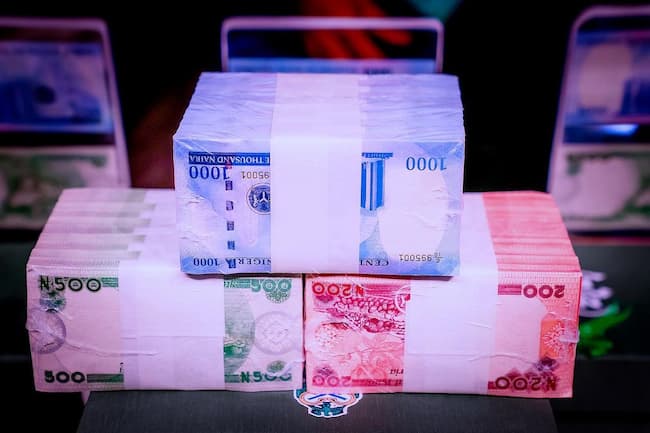The naira exchange rate fell in the official currency market on Tuesday, erasing previous daily advances following the Central Bank of Nigeria’s (CBN) US dollar sales to banks.
Nigeria’s gross foreign reserves balance fell by $210 million on Monday, following retail Dutch Auction sales last week. According to CBN data, the foreign reserves balance cleared $36.620 billion at the start of the week, up from $36.830 billion the previous Friday.
In the official market, the naira depreciated by 0.71% to ₦1,582.09 per US dollar, as demand outpaced supply.
Before making a 360-degree swing on Tuesday, the naira had begun to rebalance itself by recovering FX market losses. Analysts remain optimistic about the exchange rate outlook, as CBN FX sales indicate a good supply forecast in the official FX market.
In the parallel market, the naira finished at an average of ₦1,585 per US dollar as demand for foreign currency for invisible transactions increased. The black market exchange rate had risen to N1,580 per greenback, reflecting the good impact of the CBN’s retail Dutch Auction system sales last week.
Analysts believe that the authority’s multi-directional policies aimed at increasing exchange rate position in the currency market will deliver results in the absence of shocks.
The government’s recent mandate that the NNPCL to sell 450,000 barrels of crude oil per day directly to the Dangote Refinery and other local refineries has been consider as one of the avenue to create demand for the naira – estimated to save over US$7 billion in foreign exchange.
There is also a plan to issue $500 million domestic US dollar bonds to boost the nation’s FX liquidity amidst persistence shortage.
In the global commodity market, Brent crude dipped by 1.50% to $81.06 per barrel, and West Texas Intermediate (WTI) crude declined by 1.63% to $78.76 per barrel.
This decline marked the end of WTI’s five-day winning streak, as traders weighed the potential for an oversupply with the ongoing tensions in the Middle East.
Additionally, the International Energy Agency’s recent report suggested that inventory declines would ease in the final quarter, while OPEC adjusted its demand forecasts downward due to weaker-than expected Chinese demand.













